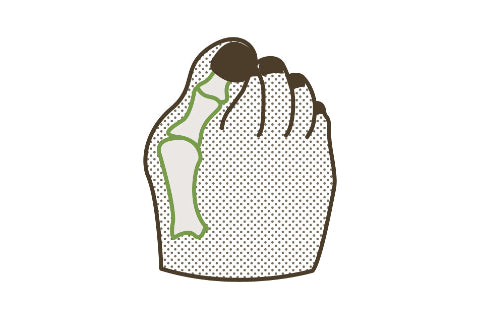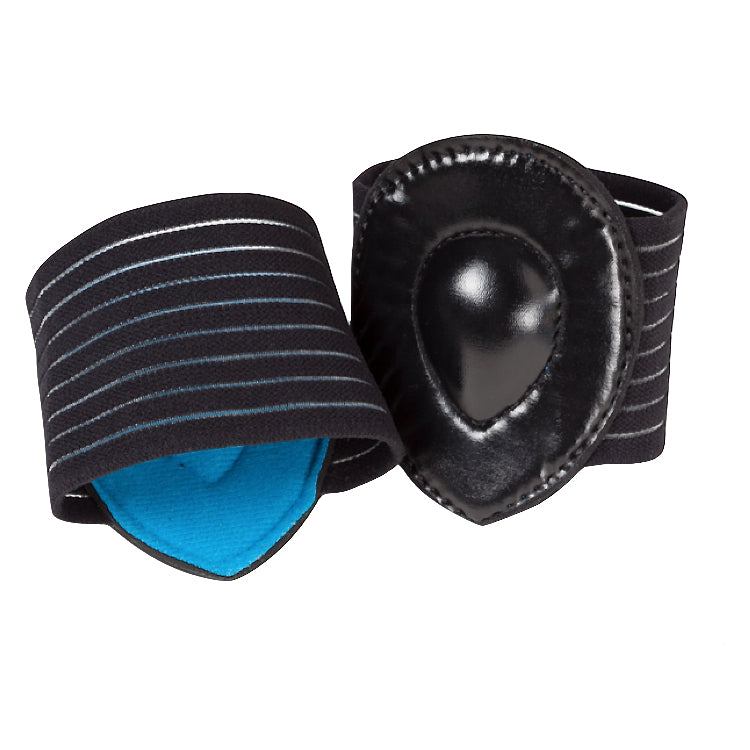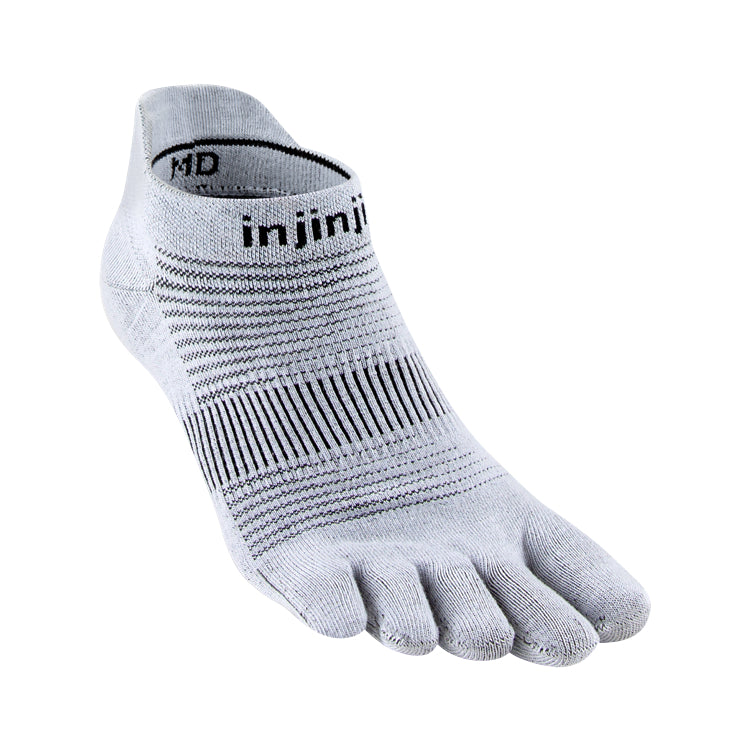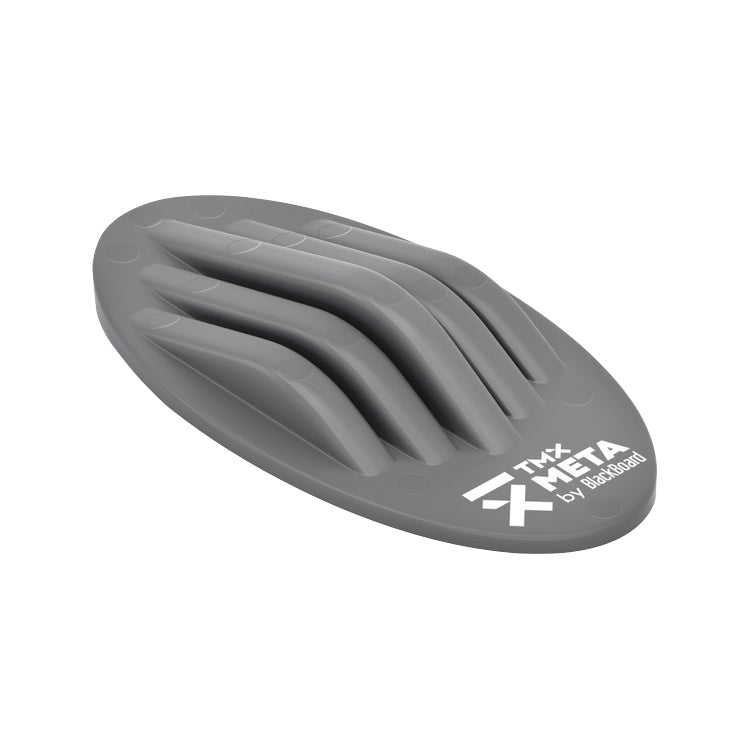Bunions
 Bunions are NOT a growth of bone that forms on the side of the big toe. They ARE a dislocation of the big toe's MTP joint. The first MTP joint is located at the base of the big toe, where one of the big toe's bones (the proximal phalanx) meets the foot's first long bone (the first metatarsal). This joint should be straight, or almost straight, and the big toe...
Read more
Bunions are NOT a growth of bone that forms on the side of the big toe. They ARE a dislocation of the big toe's MTP joint. The first MTP joint is located at the base of the big toe, where one of the big toe's bones (the proximal phalanx) meets the foot's first long bone (the first metatarsal). This joint should be straight, or almost straight, and the big toe...
Read more











This video addressed all my questions – thank you! It is very well made and the illustrations are perfect! Now I know why it hurts under the foot, because the first metatarsal actually rolls in over time and the muscles tighten or lengthen and weaken. It all makes sense now!
I bought Correct Toes after my podiatrist recommended exactly what was mentioned in the video. He had no interest in explaining what was going on, but I wanted an approach that made sense to me. Your toe gadget made perfect sense because it prevents the second toes from simply being pushed over which is what my toe spacer did. But now I get the full picture. Thank you so, so much!
Hi, Mary,
Thank you for your message. I’m glad you enjoyed the video! And I’m also thrilled to hear that you’re enjoying your Correct Toes. Please do keep us posted on your progress with natural foot health approaches.
Kind regards,
Marty Hughes, DC
Hi! I’m 17 years old and have had visible bunions for as long as I can remember, especially on the left foot. I’m sure this is from the bad shoes I wore as a child going to school (at home I was always barefoot). The video says that this keeps the arch from working properly. As far as I can tell, I have a nice high arch that works fine. I go barefoot most of the time (during the summer I almost never wear closed shoes, just Xero Shoes), and I can go several miles on gravel or pavement without a problem. On the occasions that I’ve played softball and volleyball, I’ve done so barefoot. At rest, my second toe and big toe don’t touch at all. I do have a tiny bit of pain under the ball of my right foot (smaller bunion), which is understandibly worse in shoes that have a raised heel. Barefooted I don’t feel pain unless I’ve gone a long way on a hard surface, and even then, it’s very minimal. So what’s going on with my feet, and how can I get them to their best?
Hi, Junai,
Thank you for your detailed message! Conventional footwear tends to have the greatest effect on foot structure, joint position, and toe alignment during those early developmental years of childhood (due to the nature of foot tissues during this main growth stage). The forces that work on our feet during those years can have a ripple effect on foot and toe anatomy that lasts for decades. It sounds as though you’ve adopted natural foot health approaches that are keeping your feet healthy, with the exception of your current concerns (visible bunions).
The other part of foot and toe rehabilitation is actively correcting toe misalignment using a toe spacing device such as Correct Toes (www.naturalfootgear.com/products/correct-toes). Correct Toes is most effective in resolving bunions when it’s used in a weight-bearing situation (i.e., standing, walking, running) in combination with men’s (www.naturalfootgear.com/collections/mens-shoes) or women’s (www.naturalfootgear.com/collections/womens-shoes) foot-healthy footwear and other beneficial natural footgear (e.g., Injinji toe socks, Strutz Pro, etc.).
If you have any additional thoughts or questions, please do send them my way; I’m happy to help out however I can!
Kind regards,
Marty Hughes, DC
Can you give me any idea as to how long it takes before you see results in correcting a bunion? Does it take months or years? I do have a good size one on my left foot and am considering your product as well!!!
I thank you.
Hi, Cheryl,
Thank you for your question. The answer is … it depends. How quickly you’re able to restore proper toe alignment and resolve your bunion naturally depends on numerous factors, including your tissue pliability (how your soft tissues respond to the forces placed upon them), your age, how many years you’ve worn conventional footwear, how often you use Correct Toes and other natural approaches (e.g., relevant stretches), how often you avoid wearing injurious footwear, etc. A lot of folks see significant improvements in a matter of months, but to fully restore your feet and toes to their natural state may take longer. Just as it took a long time for toe deformities to occur, so too does it take some time to truly rehabilitate the feet and toes.
Kind regards,
Marty Hughes, DC
I am 70 yrs old. Several months ago I purchased Correct toes, Primal 2 shoes, and Luna sandals. Wearing them has decreased my discomfort.
At my age, is alternative treatment feasible or should I resign myself to Correct Toes and barefoot shoes? If help is a reasonable expectation, is there a list of alternative treatment physicians available?
Hi, Abby,
Thank you for your comment. I’m glad to hear that you’re putting your foot-healthy footwear and Correct Toes to good use!
Wearing Correct Toes in combination with wide toe box footwear is part of a comprehensive natural approach to rehabilitating the feet. There are additional techniques you might also consider, and these are best explained by a healthcare provider familiar with the methods of natural foot care. Here is a list of healthcare practitioners with at least some familiarity with natural foot care approaches:
www.nwfootankle.com/resources/122-healthcare-providers
I hope this information helps!
Kind regards,
Marty Hughes, DC
Help!!! I am 62, very healthy, active, and a walker, jogger, and hiker. I want to avoid bunion surgery. What shoes would you recommend for my athletics? Also, I need an everyday shoe. My biggest need is for the athletic shoes!
My left foot is very affected with my second toe riding on top of my big toe. However, I am still able to do all of my physical activities. Your advice on my first shoe purchase would be of great help! I really want to avoid surgery and the downtime that comes with it. Thank you.
Hi, Kathy,
Thank you for your comment. In our experience we’ve found that a combination of products is most helpful in addressing bunions, including:
Correct Toes:
www.naturalfootgear.com/products/correct-toes
Injinji Toe Socks:
www.naturalfootgear.com/collections/toe-socks
Pedag Metatarsal Pads:
www.naturalfootgear.com/products/pedag-metatarsal-pads
Foot-Healthy Footwear:
www.naturalfootgear.com/collections/womens-shoes
In terms of specific footwear, you may like the Topo ST-2 for athletics and the Lems Primal 2 for an everyday shoe:
Topo ST-2:
www.naturalfootgear.com/collections/womens-topo-shoes
Lems Primal 2:
www.naturalfootgear.com/collections/womens-lems-primal-2-shoes
I hope this info helps!
Kind regards,
Marty Hughes, DC
I am 58 years old and recently purchased Correct Toes to try to apply the principles described by Dr. Ray McClanahan. I have foot pain secondary to sciatica and have been diagnosed with plantar fasciitis. One doctor that I saw said he did not see PF but nerve impingement instead, and he did a series of very painful shots in my ankle (no improvement). Another doctor diagnosed me with heel bursitis. Should I fly up to Portland to see Dr. Ray or is he swamped by people like me only receiving conflicting information?
Hi, Kimberly,
Thank you for your comment. And thank you for reaching out to us.
In our experience, we’ve found that Correct Toes, when used in combination with foot-healthy footwear, is an excellent tool in addressing the problems you mentioned. A lot of folks can also benefit from an in-person consultation with a knowledgeable foot care provider, such as Dr. McClanahan.
Dr. McClanahan’s clinic, Northwest Foot and Ankle, has provided a helpful list of practitioners who prioritize natural foot care methods, and I’ve included a link to that page below. Hopefully you can find somebody close by!
www.nwfootankle.com/resources/122-healthcare-providers
You could also schedule a phone or Skype consultation with one of the physicians working in Dr. McClanahan’s clinic by visiting this page:
www.genbook.com/bookings/slot/reservation/30175925/871660705?bookingContactId=2909952805
If you have further questions, please do let us know!
Kind Regards,
Andrew Potter
I wish I’d found your information sooner! I have had three surgeries. On my left foot, two to repair a detached tendon on the outside of my ankle, and on my right, a bunion repair that, in less than a year, is showing signs of failure (i.e., the bunion is returning). My question after watching this video is: Is it too late? If I get the toe spreaders and better shoes, I would hope I could gain comfort and relief from the pain I have when exercising. I am an avid hiker and backpacker.
Hi, Katherine,
Thank you for your comment and question. Most people, regardless of their foot status, can usually benefit to at least some degree from the natural approaches we discuss on this site (including after the acute recovery stage following foot or ankle surgery). Of course, it’s always best to discuss your situation (and what would work best for you) with the provider or practitioner handling your care. That person is in a much better position to assess your needs and make personalized recommendations for your foot recovery and rehabilitation.
Kind regards,
Robyn Hughes, ND
I had bunion surgery years ago, but the bunion is returning. I had physical therapy following the surgery, but I did not continue on with the prescribed foot exercises. My question is: Can Correct Toes and a comprehensive foot rehabilitation plan realign the big toe after a failed bunion surgery?
Thank you for your question, Brenda! We’re sorry to hear that the bunion deformity is returning post-surgery. Unfortunately, this is a relatively common occurrence, though it’s not inevitable if proper steps are taken to ensure the long-term well-being of your foot and toes following the procedure. We’re not sure which foot exercises you were prescribed, but it’s likely that they were intended to help you regain optimal range of motion and strength in your big toe and to prevent a recurrence of the bunion.
While a variety of foot stretching, strengthening, and mobility exercises are indeed an important part of a comprehensive foot rehabilitation plan following bunionectomies, so too is the adoption and use of men’s or women’s foot-healthy footwear. Conventional footwear, with its tapering toe boxes and other injurious design elements, is the underlying cause of bunions in most people, and going back to this type of footwear post-surgery puts the foot in the exact same predicament that caused the problem in the first place. Thus, the high number of patients who experience a recurrence of a bunion following surgery.
For those who have had bunionectomies, the best time to get on a healthier track is soon after the surgery (after the pain and swelling caused by the procedure have subsided). But certainly, you can still experience foot health gains—while keeping the new bunion at bay—by incorporating helpful footgear (including Correct Toes, Injinji toe socks, Pedag metatarsal pads, and BlackBoard ToeBands) into your daily foot care routine. Indeed, using this footgear in conjunction with helpful foot exercises and the aforementioned healthy-foot-shaped footwear can, in most cases, not only prevent a worsening of the new bunion but also help restore more optimal alignment of the affected big toe.
For more information about post-surgical approaches to foot health, we recommend that you check out our article entitled Six Ways to Restore Foot Health After Surgery (www.naturalfootgear.com/blogs/educational-articles/six-ways-to-restore-foot-health-after-surgery). And to learn more about ways to thwart developing bunions, please see our post on bunion reversal strategies (www.naturalfootgear.com/blogs/educational-articles/bunion-reversal-strategies). We hope you’ve found this answer helpful!
Yours in Foot Health,
Drs. Marty & Robyn Hughes